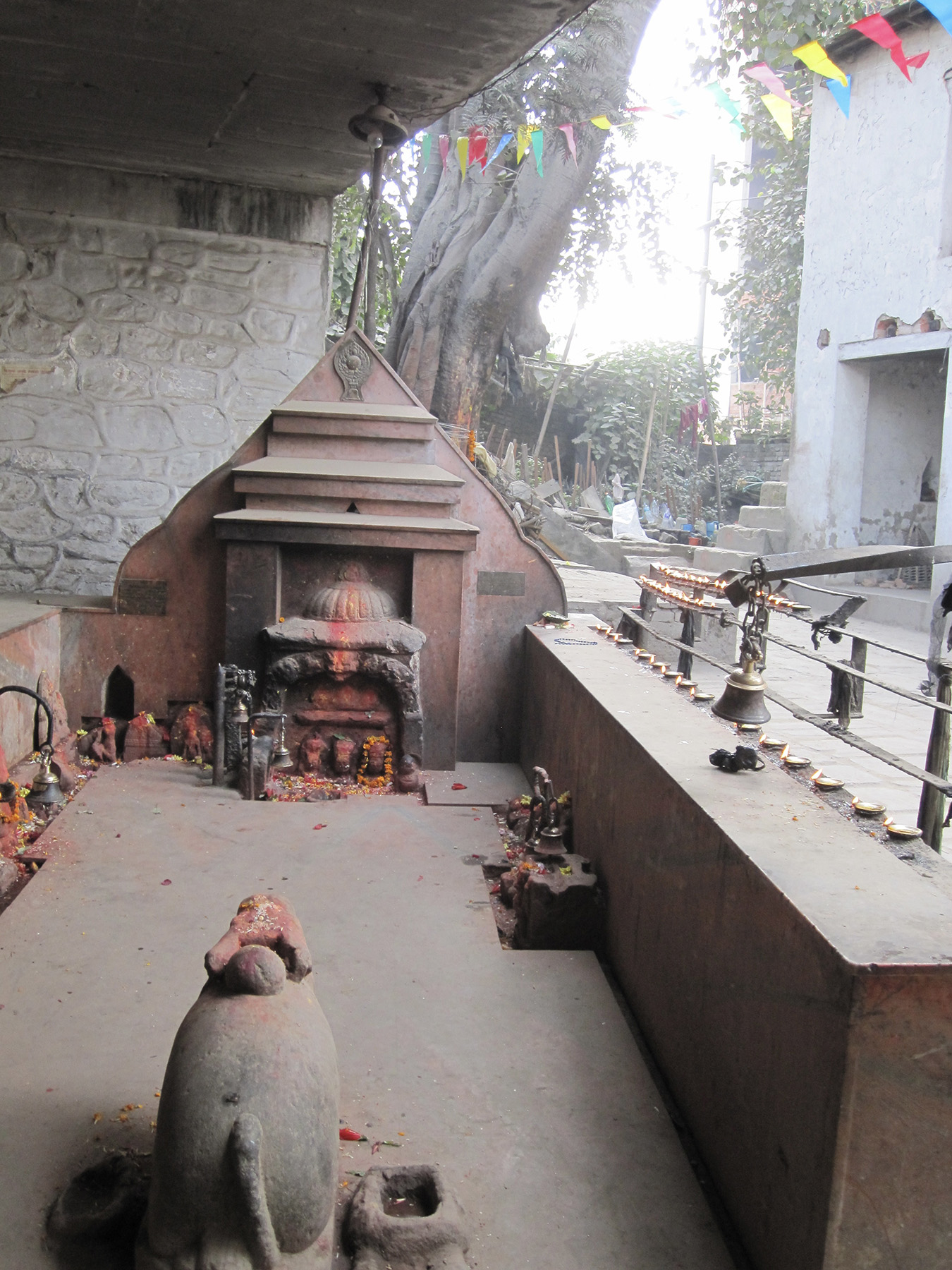Piṅgalāmāī shrine, Tilganga, Pashupati
Curated by Rajan Khatiwoda

Located beneath a bridge on Kathmandu's Ring Road, the Piṅgalāmāī shrine (DANAM ID: PPK1410) is a place where people honour the protective goddess Vajreśvarī, who is part of the group of nine goddesses around the Paśupatikṣetra area. The shrine's history is closely connected to the construction of the Ring Road, which ended up covering it. Piṅgalāmāī is also called Mahālakṣmī locally and is believed to be the younger sister of Vatsalādevī, without a spouse. Inside the shrine, there are three statues that face west and can only be partially seen due to being buried underground. These statues are worshiped as Vārāhī, Kālī, and Bhairava by the locals, even though they might represent female deities given their large earrings. The shrine is also considered a pīṭha, a type of sacred site dedicated to a protective deity. Although the exact historical origin of the shrine is uncertain, the main statues are thought to come from the 7th-8th century. Despite its unassuming location on the outskirts of Paśupatikṣetra, this shrine exists in the shadow of the central Paśupati temple's prominence. Nonetheless, it plays a crucial role within the complex fabric of Newar tantric practices, unveiling a wealth of hidden rituals that deeply influence the cultural landscape. As a result, the thorough examination and digital preservation of this monument carry significant weight in preserving both its physical and intangible heritage for future scholarly and referential pursuits. For further information, explore DANAM.
